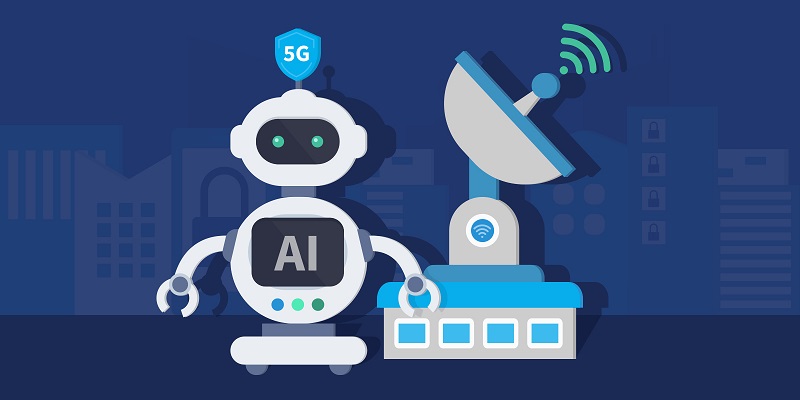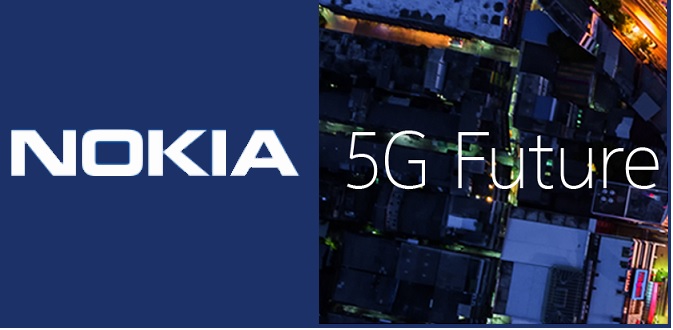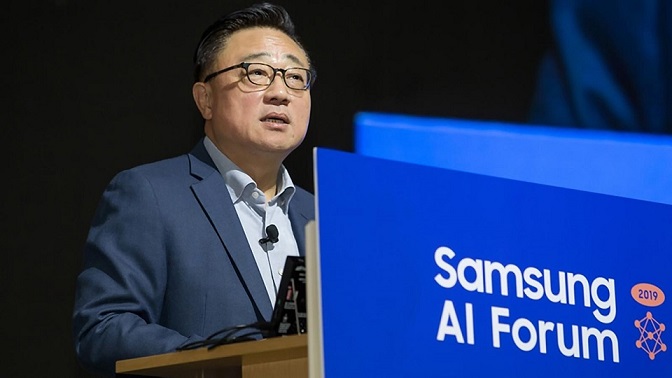Different Ways to Make 5G Services Better Using AI
Introduction
When 3G got launched in India and worldwide, we were happy that at least YouTube videos would play decently. When 4G was released, video calls & web meetings became a reality. What does 5G hold next for us? – we all are excited to know! But something that we don’t realize easily is that – the 5G revolution, which is taking shape globally, is hugely supported by AI/ML technology – thanks to this technology’s predictive and analytical acumen. For the unaware, Artificial Intelligence (AI) is human-like intelligence shown by machines that are trained by feeding data.
In general, it helps telephone networking services in several ways. It helps optimize the routing and handling of calls, analyze real-time traffic patterns, allocate network resources, etc. With the advent of 5G, its swifter uses seem necessary; hence, many leading telecom operators are coming ahead to do so.

This article is an introduction to the perspective of Artificial Intelligence as an enabler, as it gives some examples & use cases of how AI/ML is being used to help 5G flourish.
Learning Objectives
This article will help the readers to
- Understand how AI helps telephone services
- Realize the use of AI for 5G telephone
- Comprehend the prospects of AI/ML in the field of mobile telephony
- How can 5G also help support AI’s adoption?
This article was published as a part of the Data Science Blogathon.
Table of Contents
- Where and how can AI help to transform 5G?
- Ericsson embraces AI for better 5G
- Huawei and its AIOps for 5G
- Nokia’s comeback with advanced 5G
- Samsung ensures quality 5G using AI
- AT&T – secure 5G, thanks to AI
- Conclusion
Where and How can AI help to Transform 5G?
The ability of AI to analyze large amounts of data and make decisions based on that analysis is the most important feature that is used to transform 5G uniquely. Before we begin with some of the excellent real-life examples of the use of AI in 5G, let us understand where all AI can be put to use:
- Network Optimization: It can be used to optimize the performance of 5G networks by analyzing real-time data on network conditions, traffic patterns, and user behavior. This allows the dynamic allocation of network resources, such as bandwidth and power, to improve network performance, reduce latency, and increase capacity. For example, It can be used to predict and prevent network congestion and optimize data routing to minimize delays. Additionally, it can be used to improve the coverage and quality of service in areas with high demand, such as stadiums or public events.
- Predictive Maintenance: It can be used to predict when equipment or devices on a 5G network will fail so that maintenance can be scheduled proactively. This can help to reduce downtime and improve the overall reliability of 5G networks. For example, it can analyze data from sensors on the network equipment, such as temperature and power usage, to predict when a component is likely to fail and schedule maintenance before it becomes a problem.
- Network Security: AI can be used to detect and prevent security threats on 5G networks, such as hacking attempts or malicious software. By analyzing network traffic patterns, AI algorithms can identify abnormal activity, such as a sudden increase in traffic from a specific IP address, and take appropriate actions to protect the network. For example, it can be used to detect and block malicious traffic or identify and isolate infected devices on the network.
Case 1: Ericsson embraces AI for better 5G

Ericsson, a well-known telecommunications equipment and services company, is using AI to optimize 5G networks for mobile operators. They have developed an AI-powered network management solution that can dynamically analyze real-time data on network conditions, traffic patterns, and user behavior to allocate network resources, such as bandwidth and power, and to improve network performance and reduce latency.
Ericsson uses machine learning algorithms to predict network congestion and traffic patterns, enabling the network to adjust resources automatically to minimize delays. The predictive maintenance of the equipment is also being implemented to schedule maintenance proactively, reducing downtime. The solution also allows for real-time monitoring and analytics of the network, which can help operators to identify and resolve issues quickly and improve overall network performance. This includes a self-optimizing network (SON) feature, which can automatically adjust network configurations to optimize performance.
Overall, Ericsson’s AI-powered network management solution is an example of how AI can improve the efficiency and reliability of 5G networks, which can help mobile operators provide better service to their customers while reducing costs. Here is how AI is helping telecom networks become intelligent & autonomous.
Case 2: Huawei and its AIOps for 5G

Huawei, a Chinese multinational technology company, uses AI in its 5G networks to predict and prevent network congestion. Huawei’s AI-powered network management solution is an example of how AI can be used to improve the efficiency and reliability of 5G networks.
In 2016, Huawei used this in its business operations and customer service endeavors, fusing its extensive industry background of over 30 years. Through six years of successful integration, Huawei has assembled a methodology for combining human and AI efforts in delivering service solutions, erected a digital repository of knowledge and AI models, and established a training and certification program for new personnel.
Huawei applies this technology to all stages of 5G network construction to enhance the precision of network planning and expedite the deployment process. By utilizing multiple data inputs such as 5G business, user behavior, and existing technology developments with ML and iterative computing, Huawei can rapidly and accurately formulate plans for varying scenarios. The convergence of 2G, 3G, 4G, and 5G networks leads to a significant increase in the number of connections between people and devices, thereby providing a wide array of services to users but also resulting in a surge of service requests and operational challenges for O&M staff.
Huawei employs a human-AI collaborative IT operations approach, known as AIOps, to address this issue. Additionally, Huawei has created an AI-powered experience management solution with seamless integration between service and network, allowing for real-time adjustments of service quality and network policies.
Read more about Huawei’s AI-powered services for 5G evolution here.
Case 3: Nokia’s Comeback with Advanced 5G

When the business of Nokia fell due to advancing Android and Apple phones, Microsoft took over the mobile phone business. But then Nokia is recently coming back as a 5G superpower with their networks business. Nokia is strengthening its expertise in providing equipment and services for 5G and is in direct competition with Huawei and Ericsson.
Nokia recognizes that while AI/ML can improve performance in-network services, it also comes at a cost. The company is committed to evaluating gains and ensuring sustainability and trustworthiness using AI/ML. Sustainability is a strategic goal for Nokia, and the company believes that AI/ML will play a key role in improving energy efficiency in both devices and networks. For instance, AI/ML can be applied to reduce energy consumption by optimizing device channel measurements and turning off unneeded components.
Moreover, Nokia is dedicated to using AI/ML responsibly, ethically, and trustworthy. The company has launched its 6 pillars of responsible AI platform to evaluate and understand the impact of AI/ML solutions. The aim is to create the highest quality standards for AI/ML that will lay the foundation for developing AI-native communication networks.
In conclusion, Nokia believes that AI/ML is already a crucial component of mobile communication networks, but its full potential has yet to be realized. The company is a driving force in creating standards for AI/ML that will ensure sustainability, trustworthiness, and the highest quality of communication networks in the future. You can read more about Nokia’s AI-powered vision here.
Case 4: Samsung Ensures Quality 5G Using AI

Samsung is using this technology to improve the quality of service (QoS) on its 5G networks. The company is leveraging AI algorithms and machine learning techniques to monitor network performance and proactively identify potential issues that could impact QoS. This enables Samsung to make real-time adjustments to network configurations and resolve problems before they cause any significant disruption to users.
In addition, Samsung is using this technology to optimize the allocation of network resources, such as bandwidth and processing power, to ensure that they are used most efficiently. This helps the company to maximize network performance and provide a better user experience, especially during peak times when network demands are high. Samsung is also using AI to improve the accuracy of network planning and design and optimize network maintenance and troubleshooting. The company’s AI-powered solutions enable it to detect and diagnose issues quickly, reducing downtime and minimizing user impact.
Overall, Samsung uses this to transform its 5G networks and deliver enhanced quality of service to users. The company’s focus on using AI to improve network performance and reliability sets it apart in the telecommunications industry and positions it for continued growth in the 5G market.
Read about Samsung’s big investment in AI & 5G. Also, here is how Samsung is making the 5G network more resilient with AI-Human collaboration.
Case 5: AT&T – Secure 5G, Thanks to AI
AT&T is using AI to improve network security on its 5G networks. The company utilizes artificial intelligence and machine learning algorithms to monitor network activity in real-time and detect any unusual behavior or potential threats. By leveraging AI, AT&T can quickly identify and respond to security risks, reducing the risk of data breaches and ensuring the protection of sensitive information.
AT&T also uses AI to automate various security processes, such as threat detection and response, reducing the time and effort required to manage and maintain network security. This allows the company to respond to potential threats faster and more effectively, reducing the risk of data breaches and improving overall network security. In addition, AT&T is using AI to analyze large amounts of network data, such as traffic patterns and device behaviors, to identify trends and anomalies. This helps the company to detect and respond to new security threats more quickly and effectively.
Overall, AT&T is using this technology to enhance network security on its 5G networks and provide customers with a more secure and reliable experience. The company’s focus on using this to improve network security sets it apart in the telecommunications industry and positions it as a leader in 5G security.
Read more here about how AT&T has patterned with IBM to unleash the combined power of 5G and hybrid cloud AI to drive innovation. Also, you can read here how AT&T has been experimenting with this technology as a key enabler of next-gen wireless.
Conclusion
The telephone network systems evolved from simple 1st and 2nd generation to now 5th generation, bringing a big revolution in how we use mobile phones. Now it’s getting even better, all thanks to the predictive and analytical accumen of the technology. Here is what we covered about the use of mighty AI in the 5G spectrum:
- Telecommunications companies are widely adopting this technology to transform 5G networks and improve various aspects of network services, such as network performance, reliability, security, and energy efficiency.
- Companies such as Ericsson, Huawei, Nokia, Samsung, and AT&T use this to optimize 5G networks, predict and prevent network congestion, improve reliability, and enhance network security.
- It monitors network activity in real-time, detects unusual behavior, quickly identifies and responds to security risks, automates security processes, and analyzes large amounts of network data.
- By leveraging it, telecommunications companies can improve network performance, reduce costs, increase the lifespan of their equipment, and provide customers with a more secure and reliable experience.
- It is a key technology for the future of telecommunications and will continue to play a critical role in developing and deploying 5G networks.
The media shown in this article is not owned by Analytics Vidhya and is used at the Author’s discretion.








